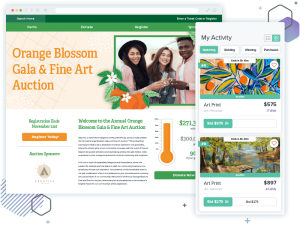Small companies and large corporations alike are discovering the benefits of corporate philanthropy. Corporate sponsorships can be very beneficial for businesses; they can bring heightened publicity, happier employees, an air of credibility, and public support. But they can be just as beneficial for nonprofits! Nonprofits can gain increased funding, more exposure, and more volunteers, among other things.
As a nonprofit, you’ll want to weigh the potential pros and cons of working with corporate sponsors. If you decide that corporate sponsorship would be good for your organization, though, these 7 steps can help you find the perfect one!
Step One: Do Your Research
Not every company will be a good fit for your organization. Think about what you’re looking for and do some research to find good candidates for a sponsor. Does the company you have in mind do business in your area? Do they have a history of working with nonprofits? Does their mission relate to yours? How can you benefit from working with them? How can they?
Step Two: Build Your Case
Many people respond well to emotional appeals for support. If you’re appealing to a company to help you, though, you’ll want to include solid facts and numbers in your pitch. Remember that you’re talking to a business! If you have testimonials from other companies about working with you, now’s the time to use them.
You should also include other facts that can serve as incentives: the number of people who will see a company’s name or logo, the benefits of employee involvement, the benefits of community involvement for businesses — anything that is compelling and relates well to your situation.
Want some ideas? This webpage has some interesting ideas about the benefits of corporate sponsorship for businesses.
A few common arguments for the benefits of corporate philanthropy include:
- Improving your overall workplace environment
- Giving employees a way to give back
- Enhancing your brand in the eyes of the customer
- Get positive media attention
Step Three: Be Specific
So you’ve found your ideal sponsor. You’ve set up a meeting with someone from the company, you’ve made the lunch reservations, and you’re ready to go. Right?
Not quite. Be prepared to be very specific about why that corporation should work with you. You’ll want to tell your nonprofit’s story, of course, and cover what you’re doing in your community. But you’ll also want to talk about them and why working with you would be a good choice. Be sure to cover how they’ll benefit, what your organization can do for them, and what options they’ll have as a corporate sponsor. This isn’t the time to wing it — be sure you cover all your bases!
Your in-person pitch or sponsorship letters should be concise but specific. Think about what a prospective sponsor might want or need to know before considering pledging support.
Step Four: Have a Plan
Once you’ve gotten their attention and emphasized how working together can be beneficial, make sure you tell your potential sponsor what, specifically, you want from them. Do you want a long-term corporate sponsorship? Do you want a one-time donation to an event? Do you want to recruit volunteers from their pool of employees? What will you give them in return? Making sure you and your potential sponsor know all the details can prevent confusion and misunderstandings in the future.
Step Five: Be Prepared to Make Concessions
Depending on the extent of the partnership, having a corporate sponsor can mean a lot of compromising. Understand that sponsors might ask for heightened visibility on your website or printed media, seats on your board, input in event planning, or other perks that you might not have been prepared to give. Knowing ahead of time that negotiating these issues might be necessary will help you keep your cool if things don’t go according to plan.
Step Six: Be Ready to Repeat Yourself
Even if your initial meeting goes well, you might have to repeat your pitch to other members of the company. That can be a good thing! If you’re asked to meet with other company representatives, make sure you reiterate and strengthen the points you made in your first meeting. You might even ask your first contact to work with you to make sure the proposal goes well.
Step Seven: Try, Try Again
Not every meeting will go flawlessly and not every potential corporate sponsorship will pan out. And that’s okay! The important thing is that you’ve got research under your belt and have already built a compelling argument that can be rethought for future companies. Don’t get discouraged! Remember the old adage; if at first you don’t succeed, try, try again.
Learn more about asking companies for donations!


